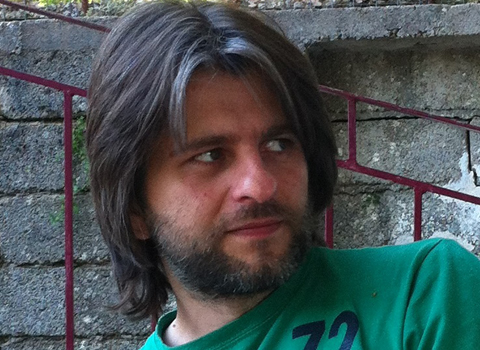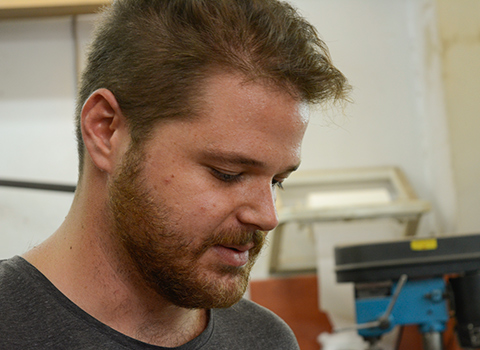




Instrument making emerged, matured and developed its methods in a very different age. The great craftsmen of the past perfected their methods, ignoring, or more precisely, rejecting simple and transitory methods used to impress the public.
In the past, skilled practitioners of Art Luthiery worked in harmony with their musician customers as well as with the development of history itself. However, in present day reality of Pop Art, the production of musical instruments on an industrial scale has influenced and limited the field of Art Luthiery.
We believe that contemporary Art Luthiery must on the one hand satisfy the largely classical elements and on the other, utilize modern technological advances. For example, the gluing of the parts of the instrument responsible for sound must be undertaken exclusively with fish-glue (a glue of preference from the old tradition which is unsurpassed in terms of its functional and acoustic qualities).
At the same time, the laser that we use to determine the positions of the frets and to carve them into the instruments assures a degree of precision that cannot be surpassed.
As you can see, the contemporary instrument maker must be familiar with both traditional methods and modern technological developments. Through a combination of these the best possible outcome can be achieved.
New stable neck for musical instruments and method of construction
ORGANIZATION OF INDUSTRIAL PROPERTY
Diploma of Patent No. 1008623 to:
Spourdalakis Christos of Georgiou & Katos Ioannis of Panagiotis
International Classification (INT.CL8): G10D 3/00, G10D 1/00.
This specific patented method of our workshop provides a stable neck, virtually unaffected by moisture changes and ensures rigidity for an unlimited period of time.



What are the main characteristics of the famous Art Luthiery as it is known internationally and what makes it so rare these days?
I. These instruments are handmade. TThe instrument maker has designed and built every part of the instrument, reflecting his personal views on aesthetics and sound. Obviously, instruments which are mass-produced in factories do not belong in this category. And clearly, the production of handmade instruments is limited in number.
II. The materials used in in Art Luthiery are, as a rule, natural. They include a variety of different types of wood dictated by tradition as well as the relevant literature on the subject. The decorative parts of the instruments include: bone; and a limited number of metal parts. The use of plastic is systematically avoided.
III. Finally, a basic characteristic of this kind of musical instrument, perhaps the most important, is the on-going evolution of its fine sound which as it improves over the years will be vastly appreciated by the musician and of course the listener.
Local tradition considers walnut and mulberry appropriate for the construction of the body. However, we believe that one should neither ignore nor exclude the wood that is suggested in the international literature on the subject which has been tested by traditional instrument makers around the world.
Walnut (Juglans regia), Mulberry (Μorus nigra & Morus alba), Ovangkol, Rosewood : Jaracanda | Pernabuco | Rosewood from Western India (Dalbergia Latifolia) Brazilian Rosewood (authentic Dalbergia Nigra - protected species) cut in 1947 (accompanied by CITES - international certificate), Maple (Acer campestre & Acer platanoides). Combination of woods is also available. More about body materials can be found {here}.
A further construction option with regard to the construction of the resonator is the choice of carving strips.
Each type of top has its own acoustic qualities. It is for that reason that we offer a variety of different tops which allow for different acoustic effects. In our tops, we use spruce from central Europe and North America. More specifically, we use spruce from Switzerland, Germany, Italy, Romania; and Sitka Spruce and Cedar from North America. All the varieties of wood that we use are well aged and we do not use wood that has been harvested illegally. According to the assurances of our suppliers, our wood comes from trees that have fallen due to natural causes.

Address
Neorion 27 &
Eleftheriou Venizelou,
Prophet Elias,
185 33 Piraeus
Phone number
(+30) 210 4223 056